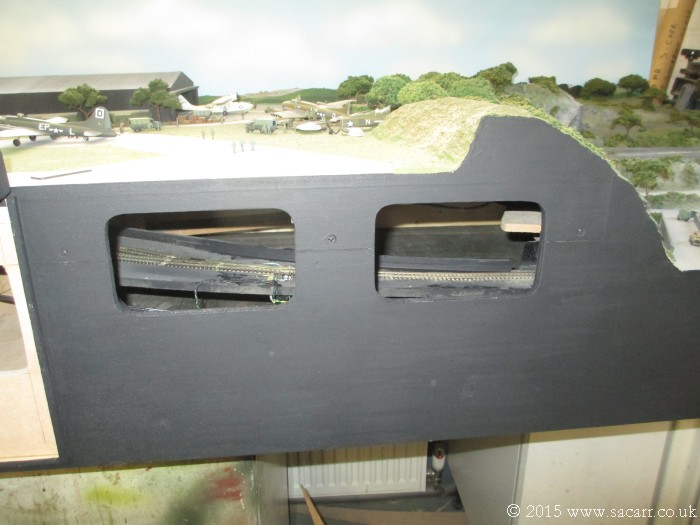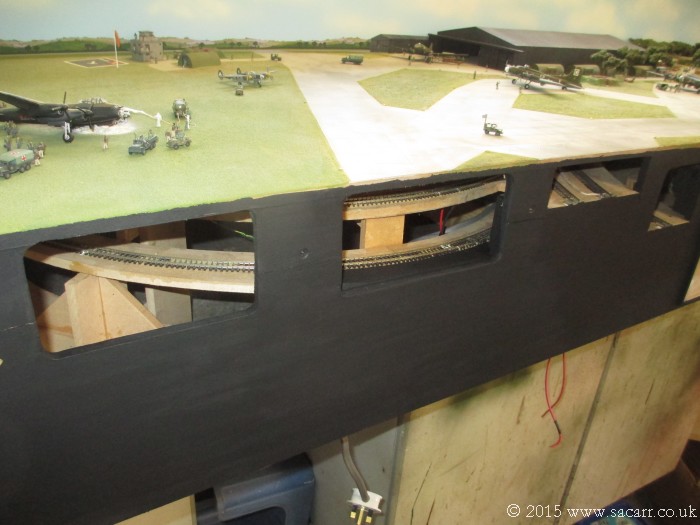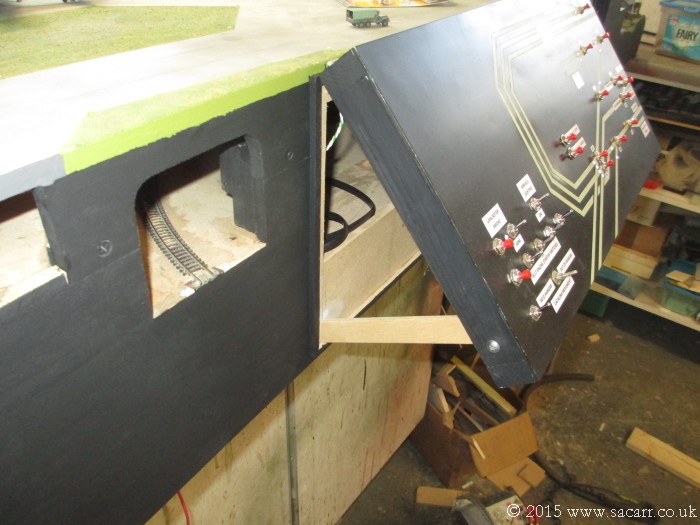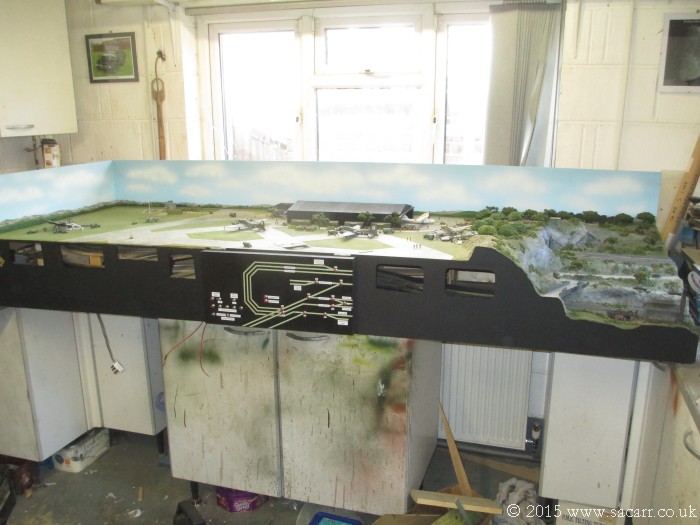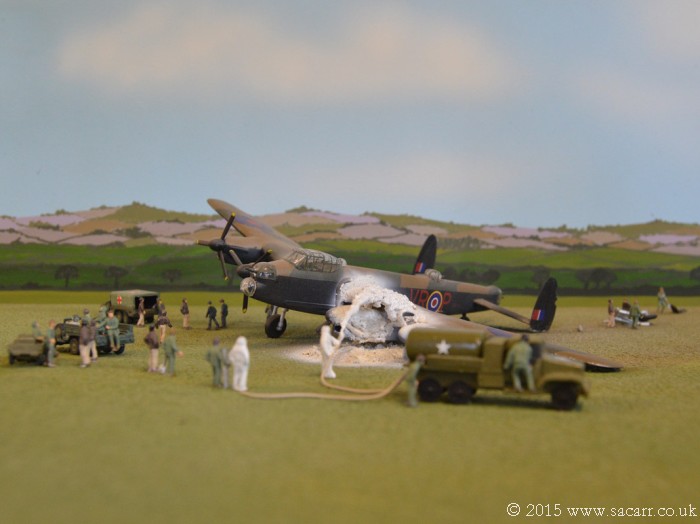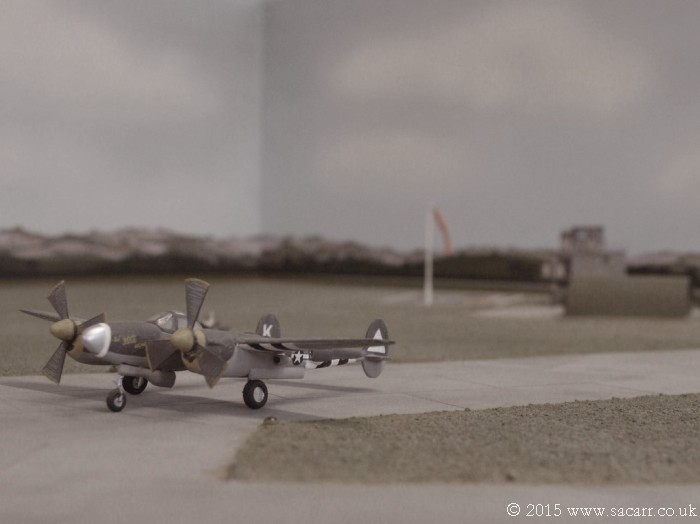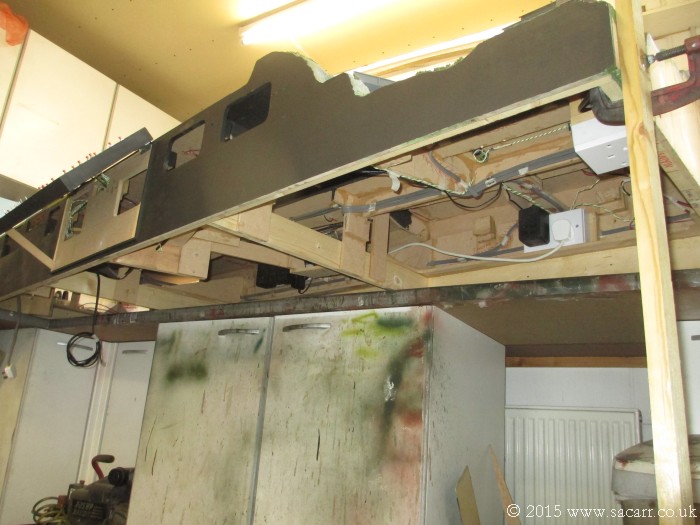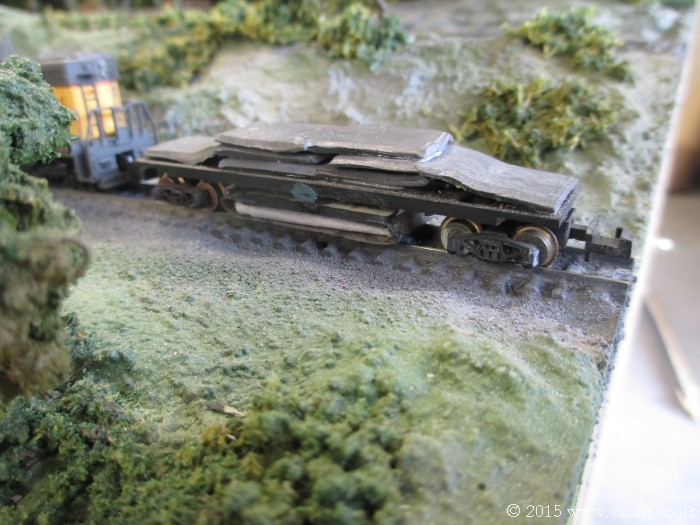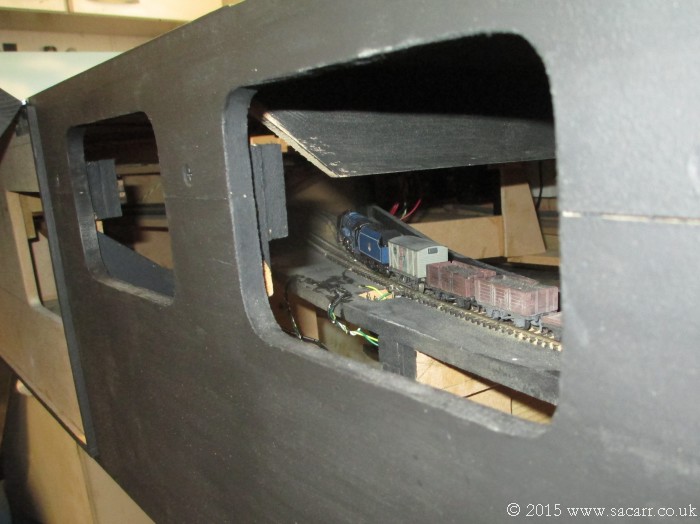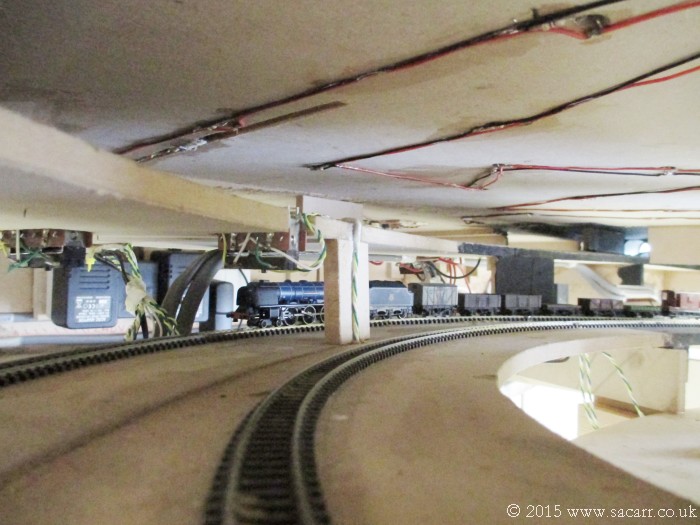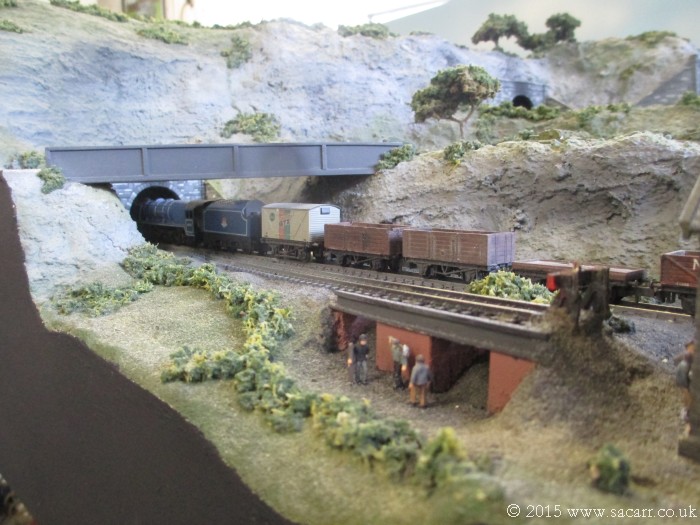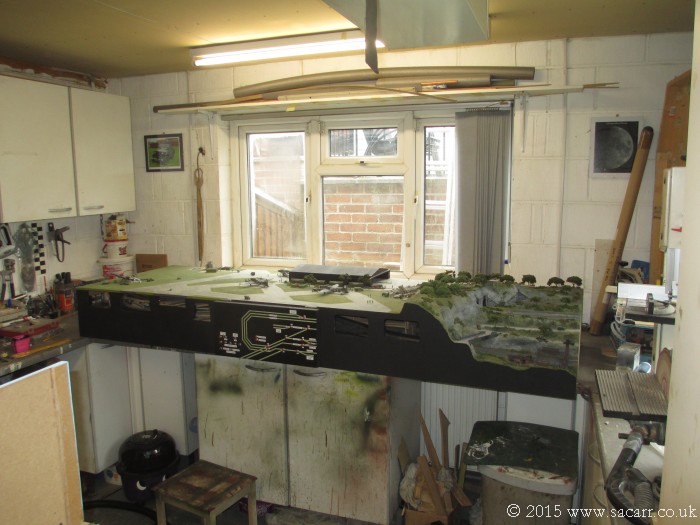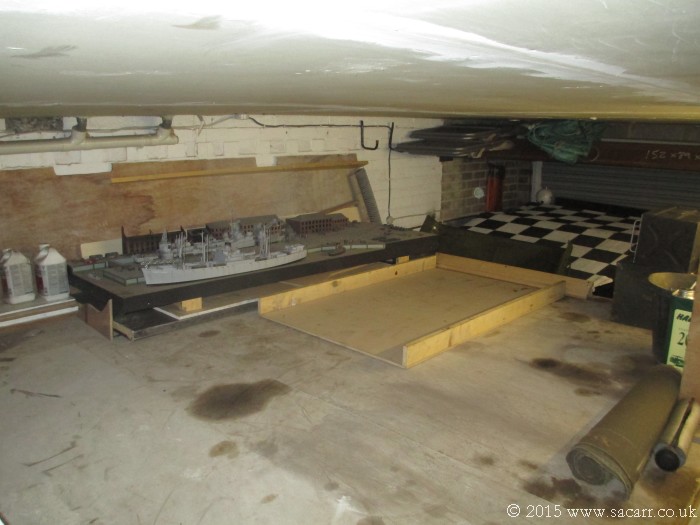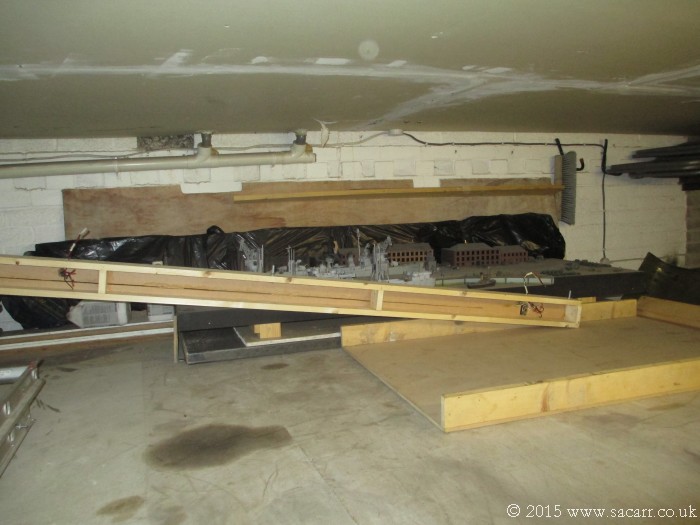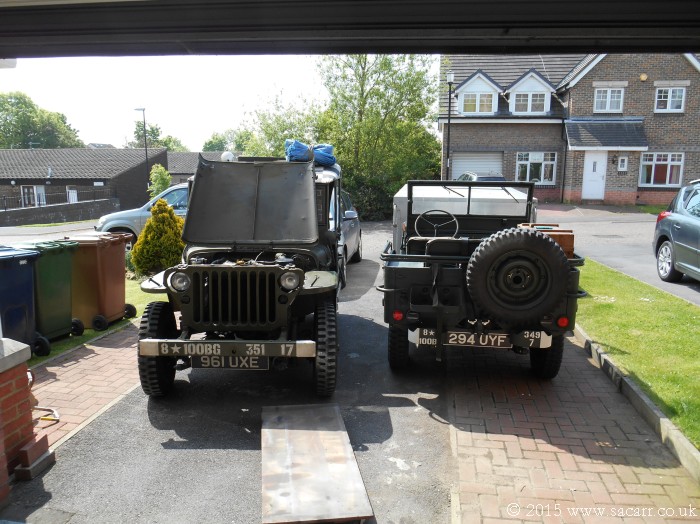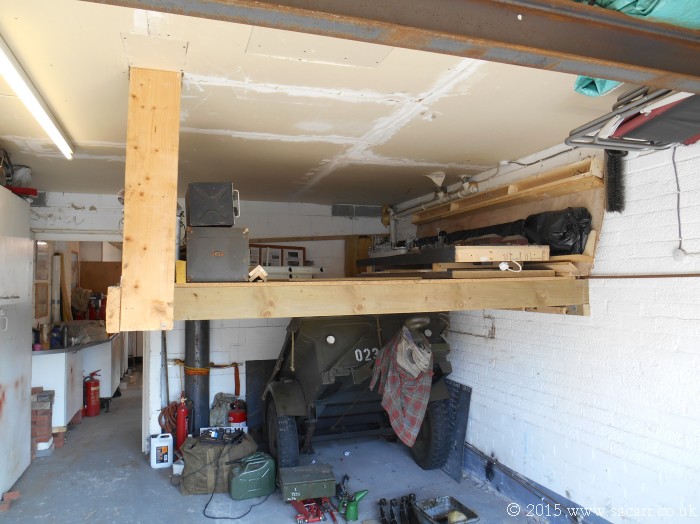armyairforce
Well-Known Member
Then along came the Easter school holidays and everything stopped. I was childminding for the first week of the holidays, and we were away in Wales for the second week, so I've only got back to the layout this week. I started with a tidy and clean down of the benches so I could move the airfield. This was disconnected and turned 90 degrees across the end of the workshop.
I would be able to angle this section one way and the other to allow either end to overhang the bench tops to give me access below.

I also decided that some additional openings in the front of the section would allow some more light in and additional access for cleaning and recovering derailments. I started with one behind the control panel.

I would be able to angle this section one way and the other to allow either end to overhang the bench tops to give me access below.

I also decided that some additional openings in the front of the section would allow some more light in and additional access for cleaning and recovering derailments. I started with one behind the control panel.


